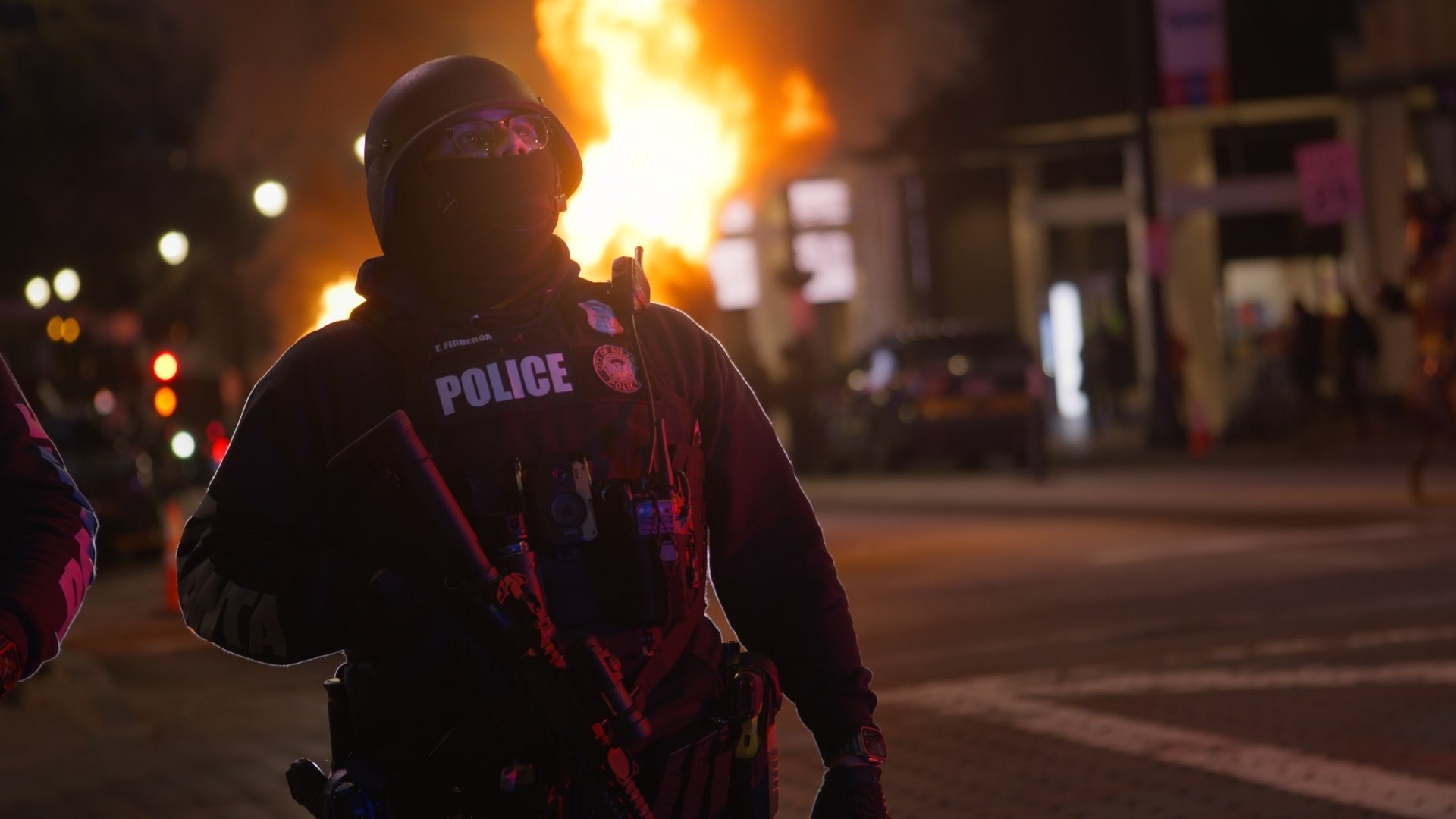It’s one thing to talk about your theory of change; it’s another thing to demonstrate what it looks like in practice.
Many look to elections, courts, think tanks, expert recommendations, data collection and information sharing, and scholarship. But in Radical Acts of Justice: How Ordinary People Are Dismantling Mass Incarceration, Jocelyn Simonson paints a different picture of how change can happen: through everyday struggle waged by organizers who antagonistically engage with systems of domination—such as courts, police, and the legislative bodies that prioritize their funding—in order to move us beyond and away from those very same institutions.
The tactics Simonson focuses on—bail funds, courtwatching, participatory defense, and people’s budgets—are forms of what Simonson calls “agonistic engagement” with the criminal legal system: “democratic action at a site of state domination that pushes back against that site’s baseline.” As opposed to technocratic experts or think tanks, Simonson argues, change can be won through collective struggle that undermines the system while working on its terms to secure both immediate material wins (e.g., freedom for criminalized people, budget reallocations, etc.) and long-term ideological wins in the struggle over the meaning of safety and freedom.
Roundtable
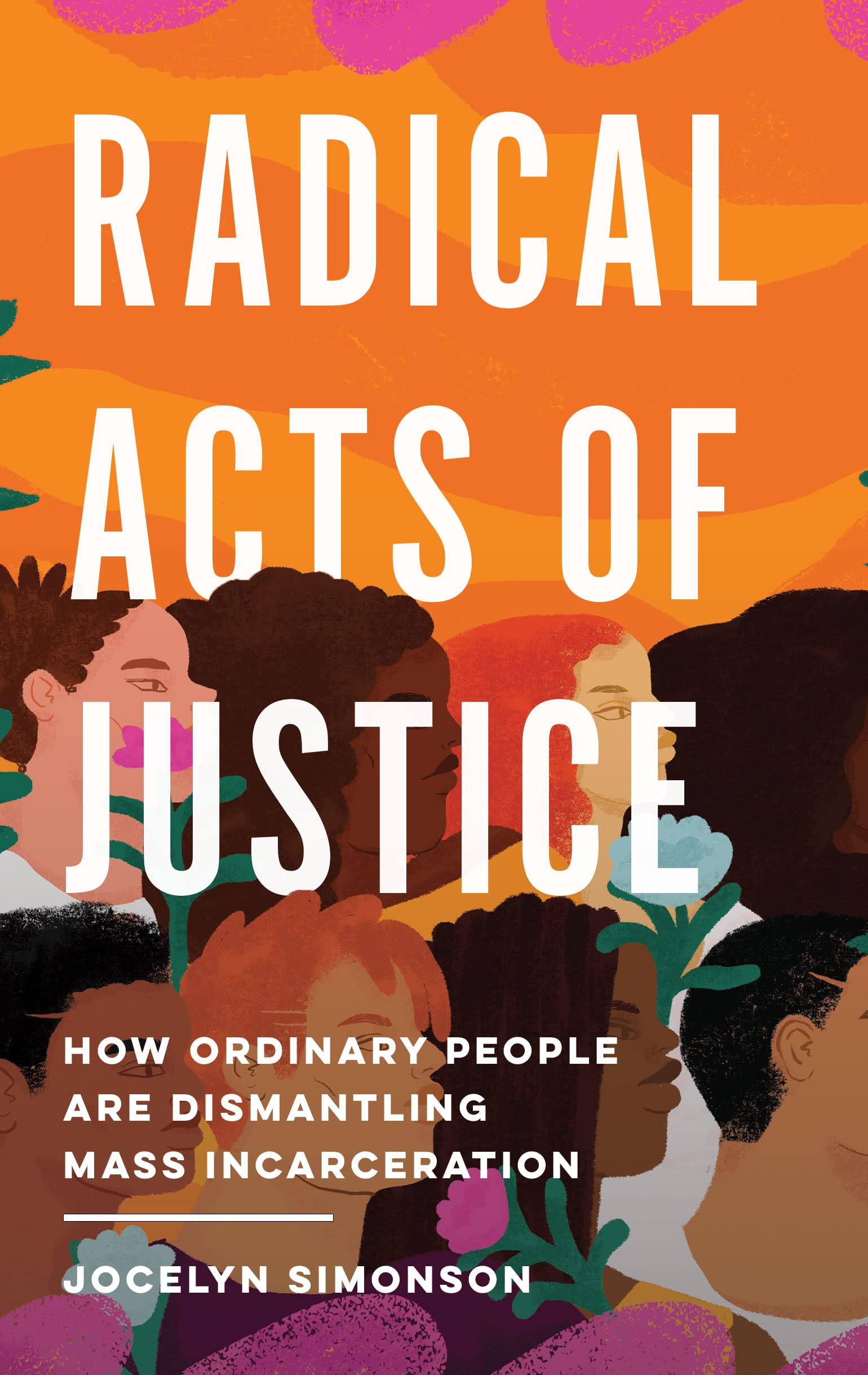
This article is part of a roundtable about Jocelyn Simonson’s new book, Radical Acts of Justice: How Ordinary People Are Dismantling Mass Incarceration.
These radical acts of justice, Simonson argues, drive ideological change by not just challenging existing paradigms of public safety and wellness, but by marshaling collective power to secure immediate wins that can build toward a new vision. At their best, these tactics draw on existing relationships, heighten contradictions and expose hypocrisies, make connections between daily occurrences and systemic realities, utilize a combination of tactics, and further radicalize those who engage in them.
My response to Simonson takes lessons from the fight to stop Atlanta’s proposed Cop City, a movement in motion for over two years to prevent the destruction of hundreds of acres of critical forest land and the construction of a police militarization facility worth more than $90 million. In what follows, I affirm the importance of these methods and add to the constellation of tactics that might be considered radical acts of justice.
The wins Simonson describes, such as the defeat of the faux-humanitarian Boston “jail court,” resulted from an ecosystem of organizations pursuing different tactics with varying degrees of coordination, building on years of previous collaboration. As some live-tweeted the jail court hearing, others protested outside, while bail fund organizers prepared to pay bail for detained people and to support them with transportation, cell phones, and other community support. Together, Simonson explains, “the organizers worked within the rules of the system to put forth a collective idea of justice that cannot be reconciled with the dominant story the system tells itself.”
More from our decarceral brainstorm
Every week, Inquest aims to bring you insights from people thinking through and working for a world without mass incarceration.
Sign up for our newsletter for the latest.
Newsletter
Many of these tactics have also been central to the struggle to stop Cop City. From the early days of the movement to nearly two years later in May and June of 2023, Atlanta residents have attended City Hall to speak against Cop City and call for real community investment. Organizations like the Atlanta Solidarity Fund have supported criminalized protesters and highlighted police repression, even as they have themselves faced criminalization. Activists have live-tweeted bail hearings in which judges have detained people for months due to evidence as damning as having mud on their shoes, shaping public opinion of these prosecutions as fundamentally politically motivated.
Most recently, a coalition announced an effort to put Cop City to a direct vote by the people of Atlanta through a referendum initiative—an uphill battle given a tight timeline, petition-gathering restrictions, and bureaucratic interference. The referendum, too, is an example of playing by the system’s rules to secure both immediate material and long-term ideological wins: Organizers are fighting to both halt the facility’s construction and to shift the public’s ideas around public safety. And while some such efforts can veer into respectability politics, referendum organizers have vocally supported a diversity of tactics while outwardly rejecting the validity of Atlanta’s ruling regime.
Through this agonistic engagement with various systems of domination in Atlanta, the Stop Cop City movement has shifted public consciousness around not just Cop City, but policing and public safety more broadly, while fighting to defend criminalized comrades, support each other through networks of care, and build infrastructure for the long haul.
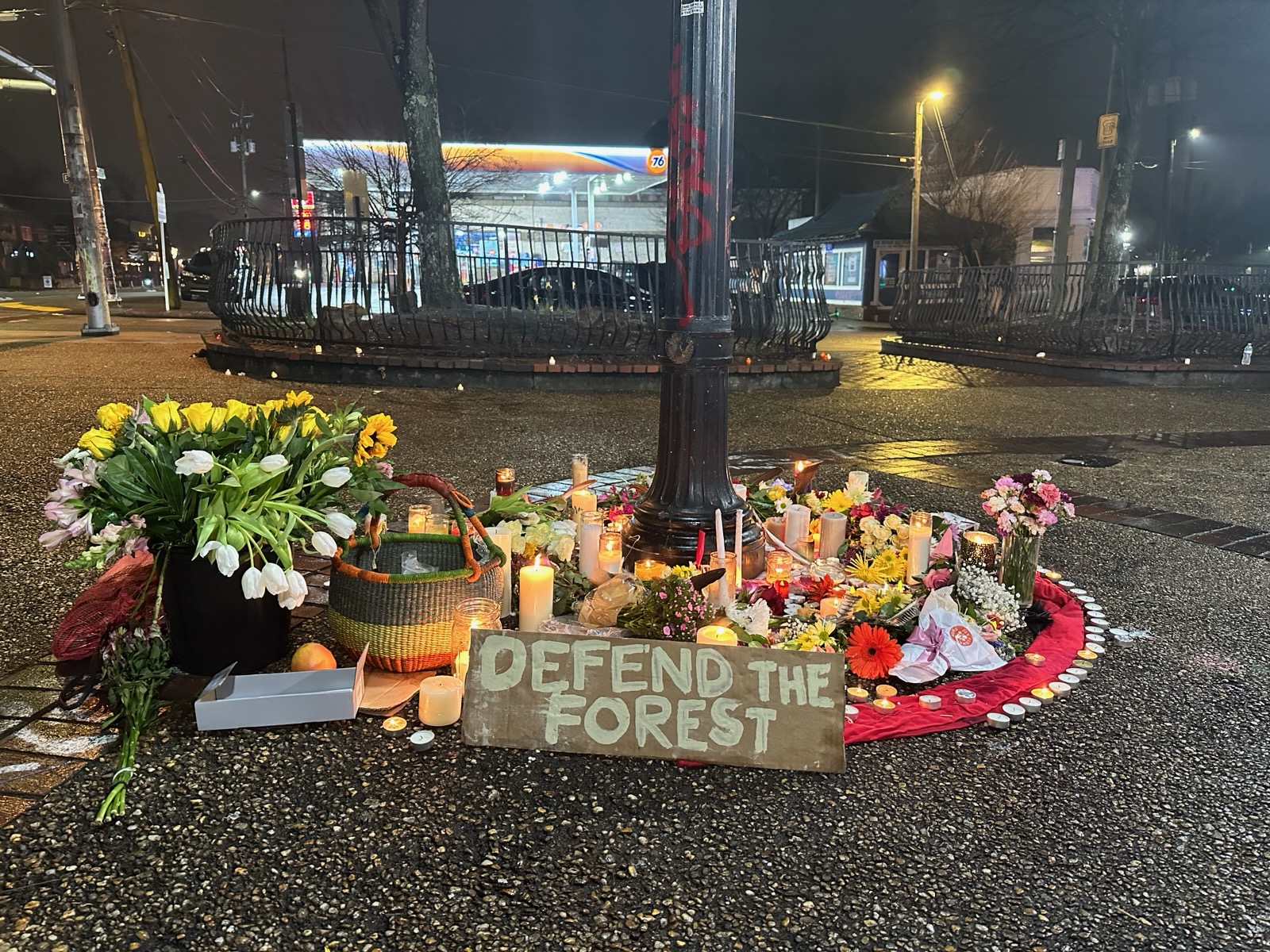
But importantly, these tactics are just one part of the story of the decentralized movement fighting to stop Cop City. While many have engaged at local jails, courthouses, and City Hall, others have grown the movement and secured wins through tactics that are decidedly opposed to engaging the system on its own terms.
After the Atlanta City Council voted in September 2021 to approve the destructive plans for Cop City, activists flocked to the Weelaunee Forest and set up encampments to defend the forest from those who would destroy it. Engaging in militant direct action, forest defenders have repelled contractors’ machinery, built barricades at entries to the forest, and sabotaged construction efforts.
Outside the forest, activists have posted fliers in the neighborhoods of the police who murdered the forest defender known as Tortuguita, vandalized the buildings of banks and corporations that are backing Cop City, burned and destroyed police vehicles and surveillance cameras, and applied pressure to executives of key project contractors through home visits and protests. Networks of activists and organizations have made mutual aid central to the movement, recognizing that community support and the infrastructure to sustain it are critical for any successful movement. More broadly, Atlanta residents have taken to the streets again and again in protest of Cop City, living out the slogans they chant of “No justice, no peace!”
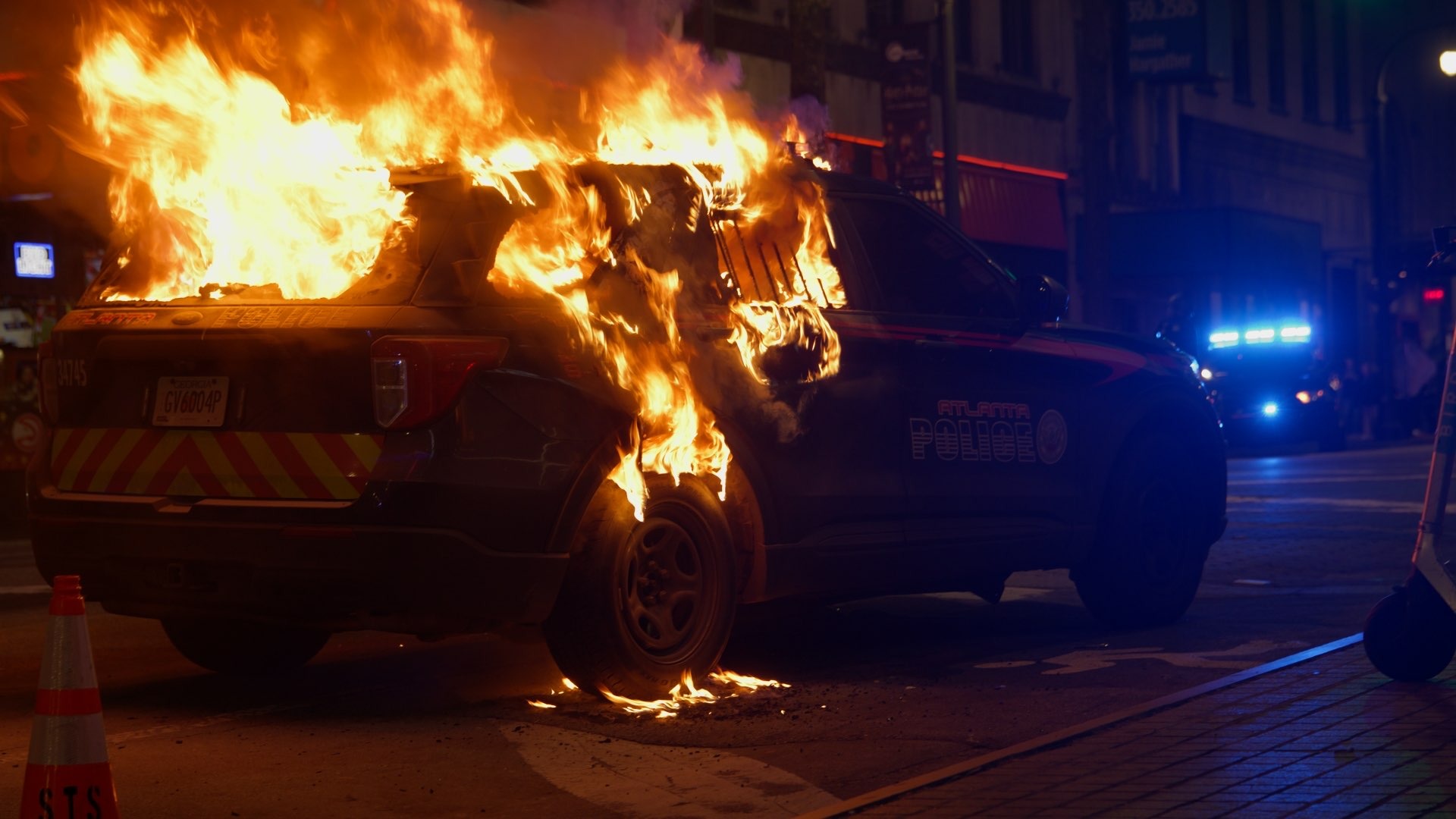
These efforts have drastically delayed the project’s timeline, raised its costs, and forced key contractors to pull out, as part of the broader strategy to target any and everyone involved with advancing Cop City: city and state officials; the Atlanta Police Foundation and its corporate backers; project contractors; banks providing the loans; the police, judges, and jailers who target activists; and even nonprofits who give cover to the project.
While these tactics depart from Simonson’s focus in the sense that they do not necessarily engage on the system’s terms, I argue that these tactics are also radical acts of justice that are critical to movements working amid extreme state violence. To be clear, this is not a challenge, but rather a complement to Simonson’s work. As Simonson notes, no one tactic represents a silver bullet or incorruptible method; no single tactic can build the new world we need. Instead, this response adds to the constellation of tactics Simonson describes.
Many of these tactics are also rooted in collaborative, relationship-based, everyday work. Just as those who opposed the Boston jail court had built trust through past collaborations, the Stop Cop City movement, with its many different lanes, has built upon previous movements and formations. These include ideological, relational, and infrastructural roots in the Atlanta Occupy movement, longstanding mutual aid and jail support work, the campaign to close and repurpose the Atlanta city jail, campaigns to end immigrant detention, and the 2020 uprisings and occupations, such as that of the Rayshard Brooks Peace Center.
While mainstream media and elected officials attempt to pit militant direct action and property damage against “acceptable” forms of dissent, the Stop Cop City movement has shown how they can be symbiotic. Over the course of the movement, different sections of the decentralized movement have stepped up to keep the movement alive, with the use of different tactics ebbing and flowing.
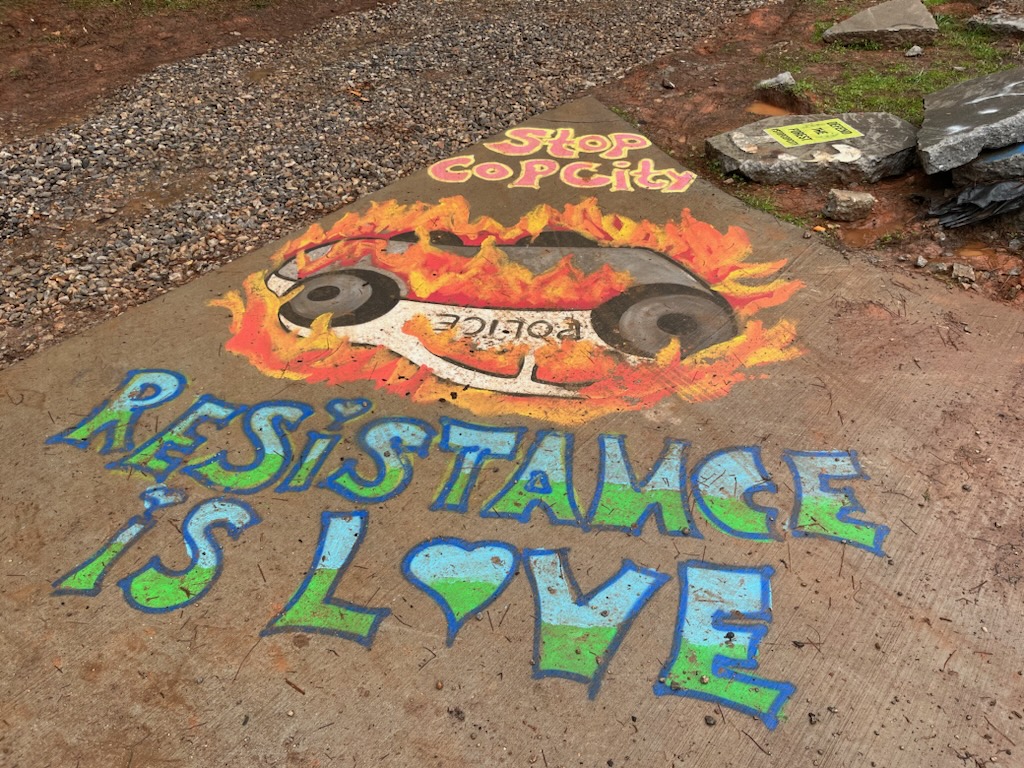
For example, while the current referendum initiative brings with it the promise of stopping Cop City through a vote, and could even win a court injunction on construction efforts that would open up more space for other organizing against Cop City, there would be no referendum campaign to be waged if not for those who kept the movement alive by putting their bodies on the line in the forest; thousands of residents would not have shown up at City Council in May and June of 2023 without the multiyear canvassing, political education, and mutual aid efforts in the neighborhoods surrounding the proposed Cop City site. In the wake of the September 2021 vote in favor of Cop City, it was the forest defenders who insisted that the fight would go on—that the struggle would not end on the city’s terms.
The movement’s militant direct action, land occupation, and sabotage of construction machinery have not only kept the struggle alive, but shifted the Overton window when it comes to how even nonprofits are willing to engage the struggle. When asked about the sabotage of construction and police machinery, the referendum campaign—notably, headed by nonprofits and electoral organizers—has continuously reiterated its support for a diversity of tactics, in a stark departure from many nonprofits’ more risk-averse approach to political action. Through a combination of tactics, the Stop Cop City has built a united front against Cop City that is willing to fight by any means necessary.
Just as with tactics that directly engage the system, much of the militant direct action has also heightened contradictions and exposed hypocrisies, thrusting fundamental questions into public consciousness: Are we more concerned about the “violence” of destroying construction machinery and police property, or about the violence of capitalist exploitation, environmental devastation, and police murder? What do we do when it’s liberal Democrats, rather than Republicans, who are leading the efforts to destroy an urban forest, suppress residents’ right to vote, and expand the police state? Do we truly believe that Cop City is a matter of life and death, and, if we do, what are we willing to do to stop it?
In this sense, just as many who engage in the work Simonson describes find themselves radicalized, the Stop Cop City movement has been radicalizing for many—myself included. While I was already an abolitionist, being part of this movement has clarified for me the stakes of our organizing, while highlighting that fascism is truly a bipartisan affair, and that there is no one coming to save us but ourselves.
Sometimes, radical acts of justice look like bail funds, courtwatching, and people’s budgets. Other times, they look like burning a police motorcycle fleet and repelling machinery that would rob a majority-Black community of critical urban forest land. In the movement for a new future rooted in collectivity and care, we need all of these radical acts of justice.
To read Jocelyn Simonson’s original essay, click here. A second response by Chicago organizer Sharlyn Grace can be found here.
Header image: Nolan Huber-Rhoades, Atlanta Community Press Collective
